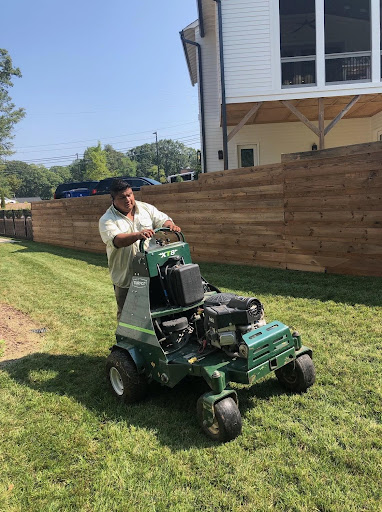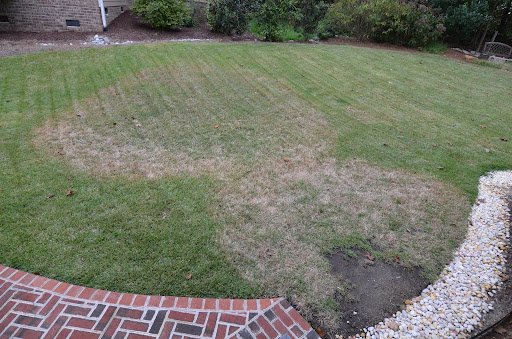Lawn care challenges are often high this month, but we have the info and solutions your lawn needs to thrive.
September is when many homeowners have concerns about the amount of weeds in the lawn and declining turf (this is especially the case for Fescue turf). There are a few uncontrollable reasons for this.

Have you ever heard of NC being in the transitional zone? Essentially, because NC weather transitions from cool winters to hot summers, neither warm- nor cool-season grasses are an exact fit for our state. For this reason, even with a versatile grass-like cool-season fescue, successful seeding is heavily dependent on the time of year it’s done. This is due to the potential for heat/dry periods, shade, disease damage and more in the spring. You can learn more from our recent blog.


Core aeration seeding is a common practice for seeding fescue in the fall, which Fairway Green is happy to offer. This process involves creating small holes in soil (done by removing thatch and soil) reducing compaction and helping prepare the seeding bed. This ensures the best seed-to-soil contact, which is crucial for good germination and lawn establishment.
Core aeration will also:

Large patch fungus is a harmful disease for Zoysia, Bermuda, Centipede and St. Augustine turfs in the fall and early spring. It’s similar to brown patch fungus on Fescue. Fairway Green is seeing more cases of this disease every year in our area. Damage occurs before you can even be aware of it and will not be visible until green-up in the spring.
Controlling large patch fungus requires two applications of preventative fungicide in the spring and fall, or when ground temperatures are between 50 and 70 degrees. This is the only real way to handle the disease.

Planting ornamentals in the fall allows them to establish with less stress from heat and drought conditions. Here are some key tips to help them thrive:

We have seen several cases in the past two weeks of fall armyworms laying eggs on structures like homes, trees and shrubs. Eggs hatch as larva, drop to the ground and start feeding heavily on healthy actively growing turf for about two-to-three weeks. For more information on them and how they can best be managed, read our blog.

We are now in the midst of the fall grub cycle—when white grubs can cause major damage if not caught early.
White grubs are the larvae of Scarab beetles. There are several beetles that produce the grubs we see while digging in our lawns and natural areas, including Southern and Northern Chafer, Japanese, Asiatic, Green June and May beetles. Grubs are identified by their off-white colored bodies and off-brown hinds and heads. Grubs have six legs and measure from ¼ to 1½ inches. They are often seen in their C-shaped position in the soil.
White grubs create damage in turf by eating through root systems. This damage is usually observed in late spring or fall as an off-color, wilting appearance on one’s lawn. As it’s commonly misdiagnosed as disease, heat or dry stress, you can confirm you’re dealing with white grub damage by:
To determine the extent of your grub activity and the need for control, you will need to use a spade to remove the upper 3 inches of soil in a 12” x 12” area. Then, cut back the turf sample to count the number of grubs and inspect root damage. If you see nine or more grubs, take immediate action utilizing proper products. We can also be of assistance in developing a custom plan of action.